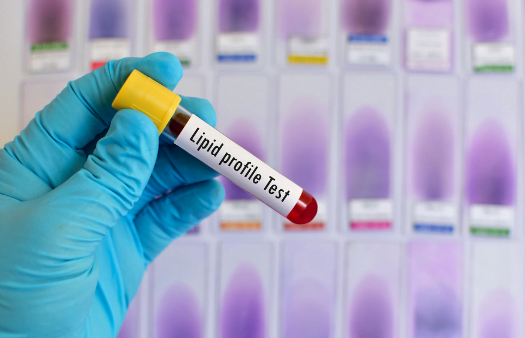Cardiovascular Toxicity Biomarker Testing in Rodents
In clinical and healthcare testing, particularly within the realm of cardiovascular & lipid profile testing, identifying and quantifying biomarkers indicative of cardiovascular toxicity is critical. This service focuses on assessing potential toxicological impacts that may arise from new drug candidates or chemical compounds during their development stages.
Cardiovascular Toxicity Biomarker Testing in Rodents involves comprehensive evaluation using laboratory animals such as rats and mice to detect early signs of adverse effects on the heart and blood vessels. The primary objective is to identify biomarkers that reflect changes at the cellular, molecular, or tissue levels which could signal potential risks if these compounds were to be used by humans.
The process typically begins with selecting appropriate rodent models based on their genetic background and susceptibility profiles. Specimens are then subjected to various experimental treatments under controlled conditions. Post-treatment analyses involve detailed examination of heart tissues through histopathological studies, measurement of specific biomarkers via biochemical assays, and assessment of functional parameters using electrophysiological techniques.
One key aspect is the identification of early indicators such as altered expression levels of proteins involved in myocardial contractility or ion channels responsible for electrical activity. These findings help researchers understand how different compounds interact with cardiac cells at a molecular level before they reach clinical trials involving human subjects.
Another important consideration is ensuring accurate and reliable data interpretation throughout the testing process. By adhering to established guidelines outlined by organizations like ISO, ASTM, EN, IEC, etc., we ensure consistent results that can be replicated across multiple laboratories worldwide. This enhances confidence in the validity of our findings while also facilitating collaboration between various stakeholders involved in pharmaceutical or chemical research.
To summarize, Cardiovascular Toxicity Biomarker Testing in Rodents represents a crucial step towards safeguarding public health by preventing potentially harmful products from entering the market prematurely. Through rigorous testing procedures combined with state-of-the-art analytical methods, this service aims to provide valuable insights into the safety profile of new drugs or chemicals before they are approved for wider use.
Why It Matters
The importance of Cardiovascular Toxicity Biomarker Testing cannot be overstated. Early detection of adverse effects can prevent costly mistakes during drug development and ensure that only safe and effective treatments reach patients. By identifying biomarkers associated with cardiac toxicity, this testing allows researchers to make informed decisions about further advancements in their projects.
Moreover, compliance with regulatory requirements is essential for any organization working within the pharmaceutical or chemical industries. Failure to adhere can result in delays, additional expenses, and even legal consequences. Our service ensures that all tests conducted meet stringent standards set forth by relevant authorities around the globe.
From a broader perspective, cardiovascular diseases remain one of the leading causes of mortality worldwide. Understanding how various factors contribute to these conditions helps scientists develop targeted therapies capable of improving patient outcomes. Thus, accurate and reliable biomarker testing plays an indispensable role in advancing medical knowledge and improving healthcare practices globally.
Applied Standards
In conducting Cardiovascular Toxicity Biomarker Testing in Rodents, we strictly adhere to international standards that guide best practices in toxicological evaluations. For instance, the Organization for Economic Co-operation and Development (OECD) provides comprehensive protocols for in vivo studies which form the basis of our testing procedures.
- OECD Guideline 426 - Acute Oral Toxicity Study: This guideline outlines methods for determining lethal doses in laboratory animals.
- ASTM E1397-05a – Standard Practice for Design and Conduct of Single-Dose Acute Toxicity Studies in Rodents: It specifies procedures for conducting acute toxicity tests on rodents to evaluate short-term effects.
- EN ISO 14518 - Animal Welfare During Testing: Ensures humane treatment during experimental procedures ensuring ethical conduct throughout the research process.
We also follow recommendations from the International Conference on Harmonisation (ICH) which aims at harmonizing regulatory requirements internationally. Specifically, ICH S2A provides guidance for preclinical studies related to safety assessment in drug development.
Competitive Advantage and Market Impact
Our Cardiovascular Toxicity Biomarker Testing service offers several competitive advantages that set us apart from competitors:
- Precision: Utilizing advanced analytical techniques and cutting-edge instrumentation ensures precise measurement of biomarkers, leading to more accurate assessments.
- Comprehensive Coverage: By covering a wide range of cardiovascular markers, we provide comprehensive insights into potential toxic effects.
- Regulatory Compliance: Adherence to international standards guarantees that our results meet all necessary regulatory requirements, reducing the risk of delays or rejections during approvals processes.
- Expertise and Experience: Our team consists of highly skilled professionals with extensive experience in this field, ensuring high-quality service delivery.
The impact on the market is significant as it enhances the quality and safety of products being developed. By detecting potential issues early on, companies can avoid costly mistakes later down the line. This not only improves their reputation but also contributes positively to public health by ensuring safer medications and chemicals enter the market.





